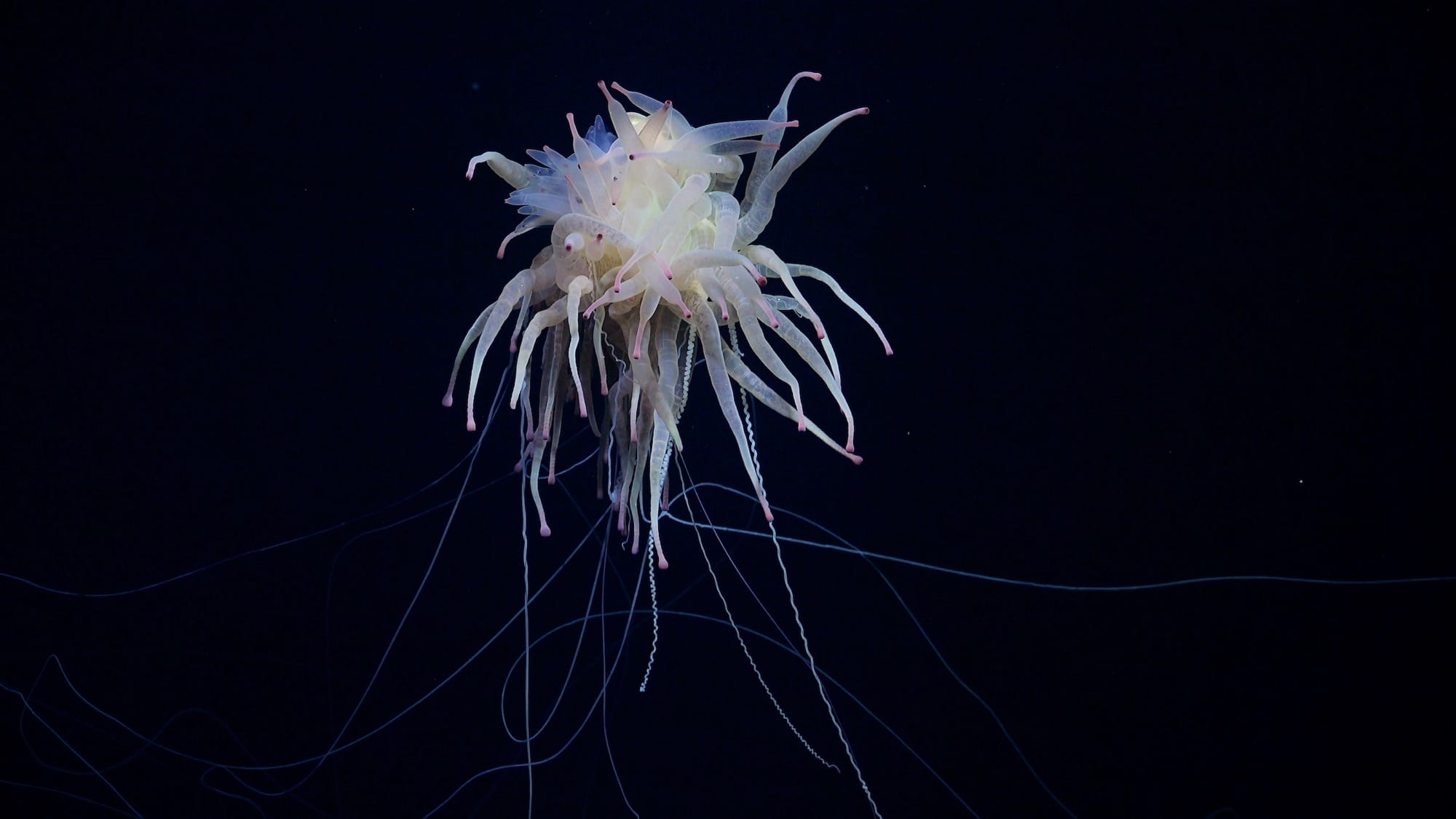This post was originally published on Colossal
Schmidt Ocean Institute Discovers 20 New Species Along the Remote Nazca Ridge
About 900 miles off the coast of Chile along the Nazca Ridge, a slew of new discoveries have thrilled marine scientists. During a 28-day expedition, researchers aboard Schmidt Ocean Institute’s vessel Falkor (too) mapped a previously unknown seamount along the ridge’s mountain chain, along with nine others. These included a pristine 800-square-meter coral garden.
The underwater peaks and coral beds provide homes for rockfish, king crabs, brittle stars, and myriad other creatures. Scientists discovered twenty possibly new species across the ten seamounts they surveyed, in addition to capturing rare species on camera for the first time.
The team documented a live Promachoteuthis squid, “a genus that is so rare that only three species have been described based on only a few collected specimens, several of which are from the late 1800s,” a statement about the findings says. “Until now, the squid genus has only been characterized from dead samples found in nets.”
Scientists also recorded the adorable Casper octopus, marking the first time the species has been spotted in the Southern Pacific, and two rare Bathyphysa siphonophores, commonly known as flying spaghetti monsters.
Schmidt Ocean Institute (previously) was established to advance oceanographic research, discovery, and knowledge, and through its efforts—including a residency program—share information about our planet’s oceans to better protect and preserve the delicate ecosystems.
Find more on the organization’s website.








Do stories and artists like this matter to you? Become a Colossal Member today and support independent arts publishing for as little as $7 per month. The article Schmidt Ocean Institute Discovers 20 New Species Along the Remote Nazca Ridge appeared first on Colossal.





0 Comments